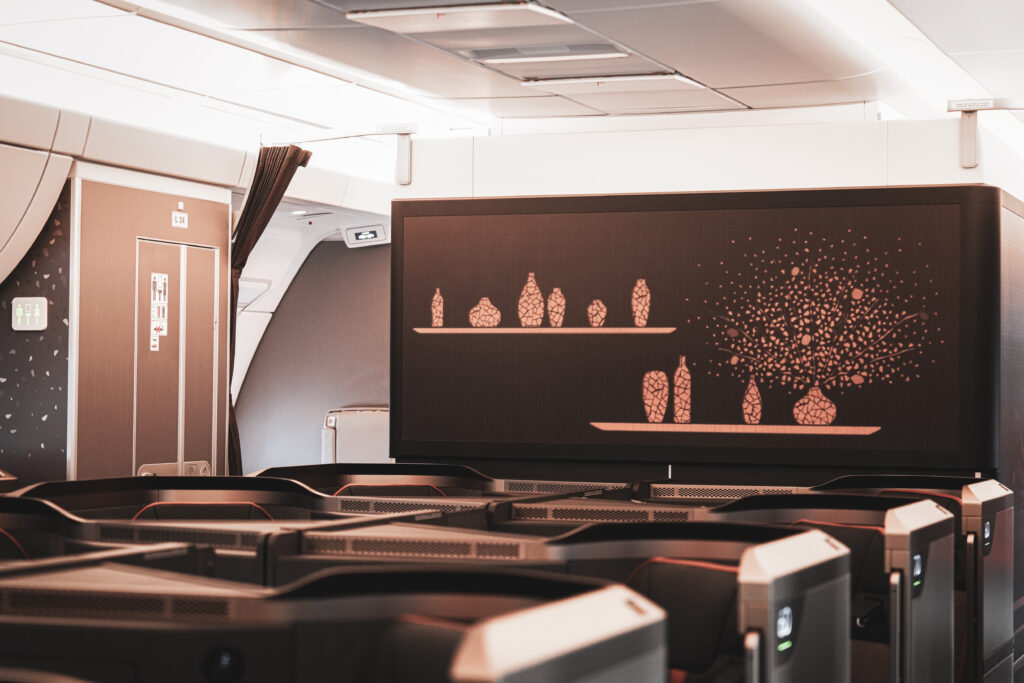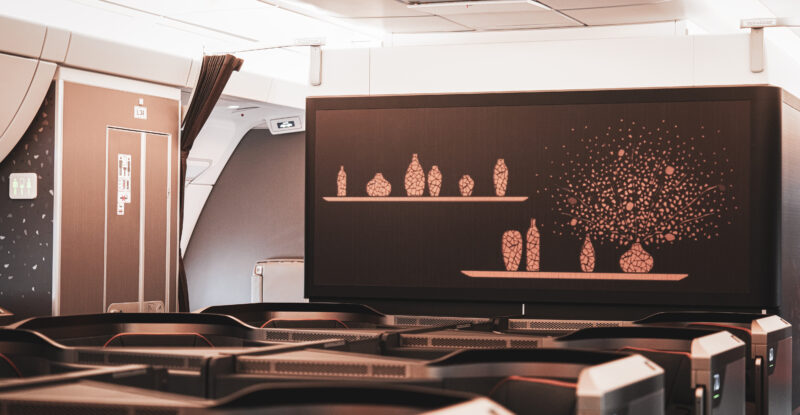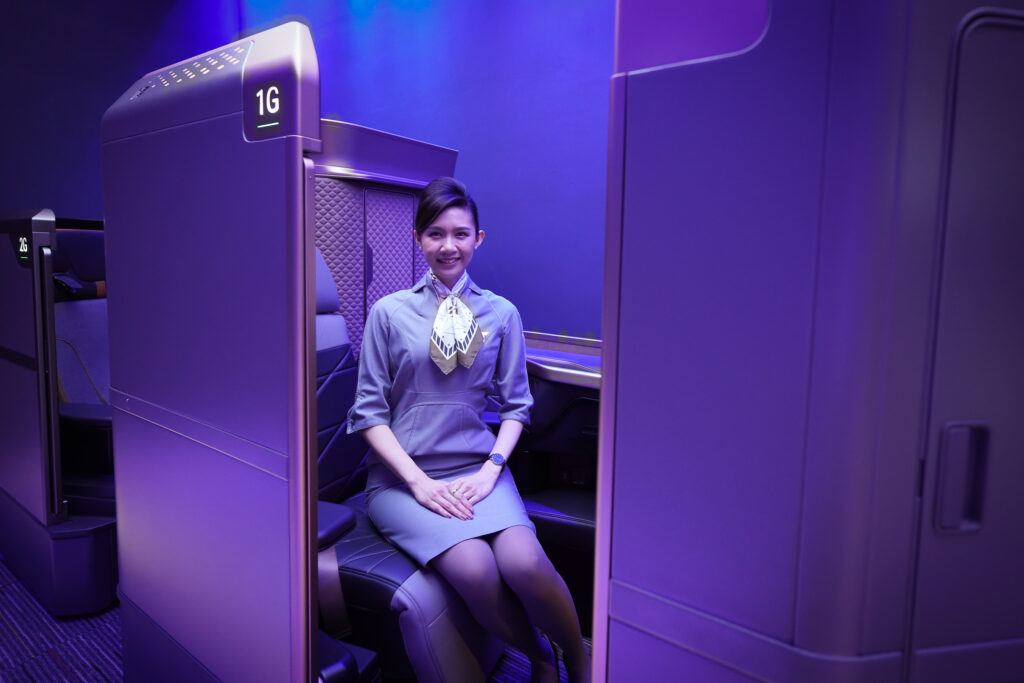 When Taiwan-based startup airline Starlux first started teasing images of the interior of its new Airbus A350-900, the carrier didn’t divulge the actual premium seating product on board. And as reported by RGN at the time, there were few design clues to reveal which herringbone was being used in business class, and for Starlux’s new front-row first class. Now Collins Aerospace has revealed that a bespoke version of its new Elements premium suite, as well as its Secant Luminous Panel micro-LED system, have launched on the Starlux A350, which entered revenue service last month.
When Taiwan-based startup airline Starlux first started teasing images of the interior of its new Airbus A350-900, the carrier didn’t divulge the actual premium seating product on board. And as reported by RGN at the time, there were few design clues to reveal which herringbone was being used in business class, and for Starlux’s new front-row first class. Now Collins Aerospace has revealed that a bespoke version of its new Elements premium suite, as well as its Secant Luminous Panel micro-LED system, have launched on the Starlux A350, which entered revenue service last month.
A Collins spokesman confirms to RGN that: “This is the in-service debut for both Elements and Secant.”
“Each of the 26 Elements business class suites places a premium on privacy with a door, 48.5-inch walls and a ‘halo’ feature angling inward at the top of the partition for an elevated sense of seclusion,” explains the aircraft interiors giant in a statement. “Patented seating comfort and suspension technology ensures relaxation whether upright, reclined or lying flat.”
Elements also forms the basis for Starlux’s four upgraded — and at 60 inches in height, higher walled — first class suites, which feature a personal wardrobe closet, a 32-inch 4K inflight entertainment screen, and a minibar.
In developing the Elements platform for airlines, Collins Aerospace’s design and engineering team took lessons from prior successful programmes, such as its Super Diamond herringbone.
But Elements boasts increased passenger space, as geometrics were optimized in areas that affect passenger movement such as in the footwell area.
Passengers may notice more sleeping space beneath the waist. “[Y]ou get a bit more of a turning circle when you’re lying in the seat,” Collins vice president for sales and marketing for aircraft seating Alastair Hamilton explained to RGN last year.
“So it’s really about the kinematic: the food tray’s higher. Everything’s just a bit further [away], using the space more efficiently.”
Meanwhile, Starlux has also launched Collins’ micro-LED lighting technology called the Secant Luminous Panel, which can display custom lighting arrays, video content and imagery on interiors.
Unique artwork is being displayed on three monuments on board the Starlux A350.

Starlux’s implementation of Secant complements the overall CMF (colours, material finish) of the seats. Image: Starlux, courtesy of Collins
A visual differentiator for airline brands, Secant is a 2018 Crystal Cabin Award finalist that can be integrated into the cabin lighting environment — on sidewalls, bins, bulkheads and ceilings — or used as a standalone statement piece, or indeed adopted by airlines for branding and marketing opportunities, notes Collins.
In short, it adds, “Secant creates a canvas out of typically underutilized cabin surfaces to provide bespoke experiences that accommodate passenger comfort and stimulate visual interest.”
Related Articles:
- Starlux first to brand front-row business-plus as first class on A350
- Collins Aerospace herringbone: the evolution of Elevation to Elements
- Diehl delves into cabin trends as aviation rebounds
- Business-plus front-row seats: where we are and where we’re going
- Inside herringbones: Elements of Super Diamond as Collins seats evolve
- Internally lit thermoplastics offer infinite PaxEx design palette
Featured image credited to Starlux














